How to Identify Bear Tracks of North America
Jul 13th 2018
Bears are a unique set of creatures. Their massive size and the potential ferocity starkly contrast their unique beauty. Bears are typically solitary creatures, with mother and cubs as exceptions. There are only eight different species of bears in the world, but they are widespread across North America, South America, Europe and Asia. With the exception of the pure herbivore Panda and purely carnivore Polar bear, bears are mostly omnivores.
Typically bears are "live and let live" creatures and often stay away from people when given the choice. Bears are well armed though with their immense size and strength, and their claws and incredibly strong jaws. While they typically stay away from people, people should also stay away from bears. Bear attacks are rare, but do occur, especially when a bear has cubs or is in fear for its life.
The capability of identifying bear tracks when out in the wild is a skill that can prevent conflicts and interactions with bears. Bears leave very distinct prints in the wild, and different species of bears have unique tracks.
Bears in general walk in an over step manner. That means their back foot lands slightly in front of where the front foot stepped off from. Bears have five toes and large foot pads, but the smallest toe often does not register in a footprint giving a 4 toes appearance. Bears will often walk on trails including man-made trails, deer-made trails, or trails of their own construction.
The Black Bear
The American Black Bear is a roaming bear; their territories are often extremely large. It's not unheard of for a Black bear to wander an 80 square mile territory. Black bears are not extremely defensive about their territory and often allow other bears to enter without confrontation. Black bears can be found primarily in the Northwest United States, but historically they have been spread across the entire United States. In fact, small populations of black bears can be found in nearly any state in the lower 48, and northern Mexico, as well as throughout Canada. Black bears have distinguished tracks that are quite unique.
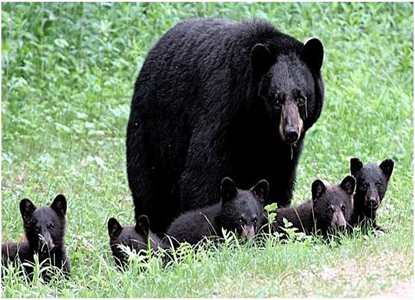
Black bear tracks feature a round foot pad, and five toes. These five toes will each have a claw that is short and close to the toe. Their claws are most commonly 1.5-inches long with a sharp curve that leaves a distinct deep puncture mark in the earth.
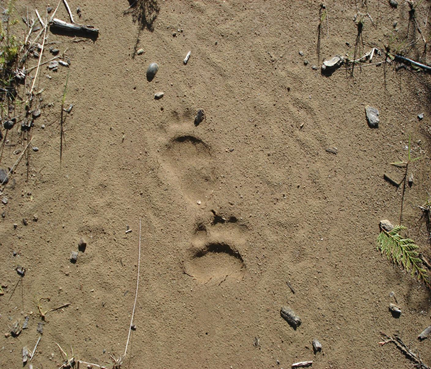
Remember, bears are solitary and often shy creatures. If you come upon multiple bear tracks with a distinct size difference it is wise to be very cautious, as this indicates a mother bear and cubs are in the area. Mother bears are fiercely protective of their cubs and are much more likely to attack than a solitary bear would be.
The Grizzly Bear
The massive Grizzly bear is an inspiring creature; its colossal size and beauty make it quite distinct. Grizzly bears, also known as brown bears, are not widespread across the United States. The Grizzly bear is not a social creature by nature, but may gather together for salmon runs, or when a mother has cubs. Grizzly bear congregations are mostly based around food. Grizzlies can be found in Alaska, Idaho, Wyoming, Washington, and Montana. They can also be found in Canada in the provinces of Alberta, Yukon, and British Columbia, as well as throughout the Northwest Territories.
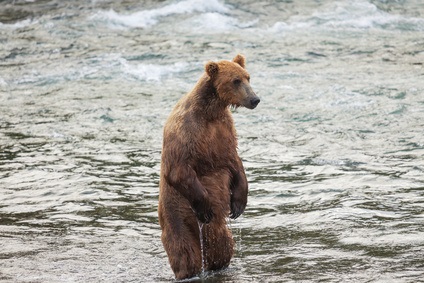
Grizzly bear tracks feature a semi-squared foot pad with toes spaced away from the foot pad. A Grizzly bear also has long two-to-four-inch claws that are spaced away from the toes. The claws curve gently and evenly and do not leave claw mark digs.
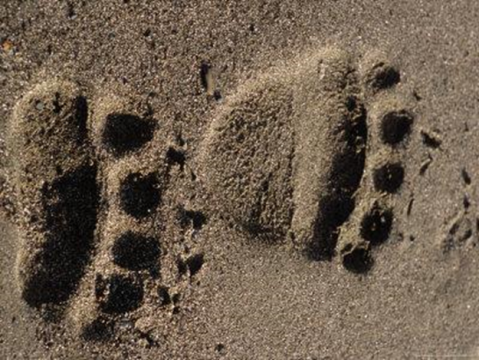
If you find multiple bear tracks in small area this maybe a congregation of bears for salmon or specific breeds of moths, but if you see distinct differences in size, it's critical to be cautious. You could be in a mother and cub area, which as with Black bears, can be very dangerous.
Telling Grizzly and Black Bear Tracks Apart
Since grizzlies and black bears inhabit the same areas, there could be confusion on identifying bear tracks. A simple trick the U.S. Fish and Wildlife service suggests is to draw a thin line or use a straight edge from one toe to another toe on the opposite side. If the straight line crosses the foot pad it is a black bear, if the line goes from one side to another without touching the foot pad then you have a grizzly bear.
The Polar Bear
Polar bears are the largest North American bears and live in the arctic areas of Northern Alaska, as well as the arctic areas of Canada. Polar bears do not fear humans and do not shy away from them. It is best to avoid polar bears whenever possible. Fortunately, tracking Polar bears is often easier than tracking other bears. This is because of the snowy environments where they live, which, when crossed, easily leaves tracks.
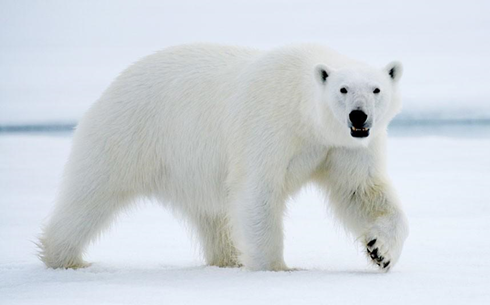
Polar bear tracks are quite large with front paws being 5.5-inches long and 9-inches wide; rear paws can be 13-inches long and 9-inches wide. This size is the most telltale sign in snow. In mud, the size is still present but there will be the appearance of brush marks. This is caused by the polar bear's paw being completely covered in hair. Polar bear claws are small and stubby and will rarely appear in tracks.
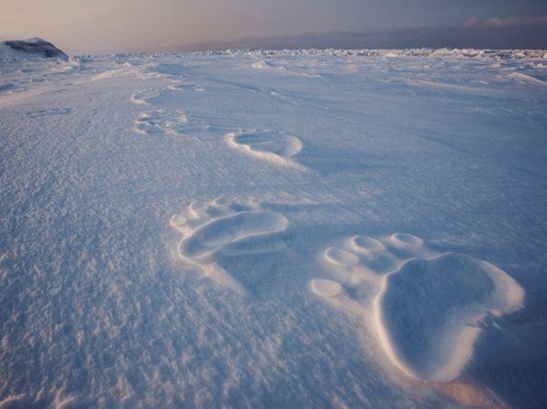
Bears can be quite intimidating, and their size, combined with their teeth and claws, make them beasts that demand respect. Bear attacks do occur, but are rare. The best advice for those in bear country is to observe bears from a distance or avoid them altogether; more than likely that's what they will do with you. It is important to know what a bear track looks like and how to distinguish bears from other creatures. This keeps you and the bears at a respectable distance and allows people and bears to co-exist peacefully.

